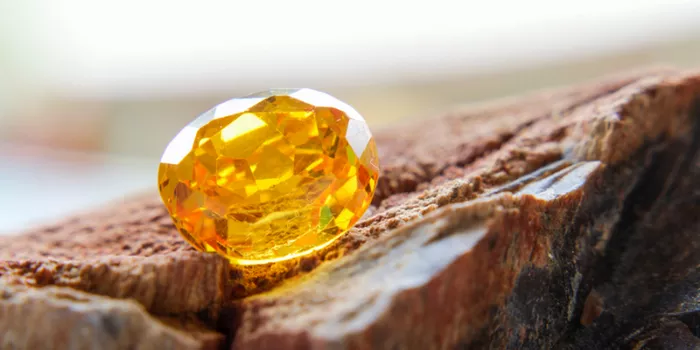Yellow sapphires, with their warm and vibrant hues, have captured the attention of gem enthusiasts and collectors alike. While sapphires are commonly associated with the color blue, yellow sapphires offer a unique and stunning alternative. But how rare are yellow sapphires, and what factors contribute to their value and desirability? This article delves into the intricacies of yellow sapphires, exploring their rarity, geological formation, sources, and market demand.
The Allure of Yellow Sapphires
Yellow sapphires belong to the corundum family of minerals, the same group that includes the more well-known blue sapphires and red rubies. Corundum is an aluminum oxide mineral that, when trace elements are present, exhibits a variety of colors. In the case of yellow sapphires, the presence of iron impurities is primarily responsible for their distinctive yellow coloration.
Yellow sapphires are prized for their brilliance and clarity, which can rival that of diamonds. Their sunny hues range from pale yellow to intense golden tones, making them a popular choice for jewelry, especially engagement rings and statement pieces. The gemstone’s beauty, combined with its durability—ranking 9 on the Mohs scale of hardness—makes yellow sapphire a coveted gem in the jewelry market.
Geological Formation of Yellow Sapphires
To understand the rarity of yellow sapphires, it is essential to examine their geological formation. Sapphires form under specific conditions in the Earth’s crust, typically in metamorphic and igneous rocks. The process requires high temperatures and pressures, which facilitate the crystallization of aluminum oxide.
Yellow sapphires are formed in environments rich in aluminum and iron, with the iron acting as a chromophore, imparting the yellow color to the gemstone. These environments are relatively rare compared to those that produce other types of sapphires. Additionally, the precise combination of trace elements and geological conditions needed to create yellow sapphires is less common, contributing to their overall rarity.
Primary Sources of Yellow Sapphires
The rarity of yellow sapphires is also influenced by their geographical sources. Historically, Sri Lanka (formerly Ceylon) has been the most significant source of yellow sapphires. The island nation is renowned for producing high-quality sapphires with excellent color and clarity. Sri Lankan yellow sapphires, often referred to as Ceylon sapphires, are highly sought after in the gemstone market.
Other notable sources of yellow sapphires include Madagascar, Tanzania, and Thailand. Each of these regions produces yellow sapphires with unique characteristics and varying qualities. For example, Madagascan yellow sapphires are known for their vibrant and saturated colors, while those from Tanzania may exhibit a more subdued yellow hue.
While these sources contribute to the availability of yellow sapphires, the overall supply remains limited. Mining conditions, political stability, and environmental factors all play a role in the production and distribution of yellow sapphires, further affecting their rarity.
Factors Influencing the Value of Yellow Sapphires
The rarity of yellow sapphires significantly impacts their value in the gemstone market. However, several other factors also contribute to the pricing and desirability of these gemstones. These factors include color, clarity, cut, carat weight, and treatment.
Color
Color is the most critical factor in determining the value of a yellow sapphire. The most prized yellow sapphires exhibit a pure, intense yellow hue with minimal secondary tones. Gemstones with a vibrant, golden-yellow color are particularly valuable. In contrast, yellow sapphires with brownish or greenish undertones are considered less desirable and command lower prices.
Clarity
Clarity refers to the presence of inclusions or internal flaws within the gemstone. Yellow sapphires with high clarity, meaning they have few or no visible inclusions, are more valuable. However, some inclusions can create unique and attractive patterns, such as the star effect seen in star sapphires, which can enhance the gemstone’s appeal.
Cut
The cut of a yellow sapphire affects its brilliance and overall appearance. Well-cut sapphires reflect light beautifully, enhancing their color and sparkle. Common cuts for yellow sapphires include oval, cushion, and round shapes. A skillful cut can maximize the gemstone’s visual impact and, consequently, its value.
See Also: Can Yellow Sapphire be Worn by Anyone? Things You Need To Know
Carat Weight
Carat weight is a measure of a gemstone’s size and mass. Larger yellow sapphires are rarer and more valuable, assuming all other quality factors are equal. However, the gemstone’s overall beauty and appeal should always be considered alongside its size.
Treatment
Many sapphires undergo treatment to enhance their color and clarity. Heat treatment is a common practice used to improve the appearance of yellow sapphires. While treated sapphires are generally less valuable than their untreated counterparts, they can still be highly desirable if the treatment is disclosed and the gemstone exhibits excellent quality.
Market Demand for Yellow Sapphires
The demand for yellow sapphires has seen a significant increase in recent years, driven by changing fashion trends and consumer preferences. As more people seek unique and personalized jewelry options, yellow sapphires have gained popularity for their distinctive color and elegance.
Celebrities and influencers have also played a role in boosting the appeal of yellow sapphires. High-profile engagements and red carpet appearances featuring yellow sapphire jewelry have contributed to their rising desirability. As a result, the market demand for yellow sapphires has grown, influencing their rarity and value.
Investment Potential
Yellow sapphires have also garnered attention as an investment option. Like other precious gemstones, high-quality yellow sapphires can appreciate over time, making them a potentially lucrative addition to an investment portfolio. However, investing in gemstones requires careful consideration of factors such as market trends, certification, and provenance.
Conclusion
Yellow sapphires are indeed rare and highly valued in the gemstone market. Their unique geological formation, limited sources, and the precise conditions required for their creation all contribute to their rarity. Factors such as color, clarity, cut, carat weight, and treatment further influence the value and desirability of yellow sapphires.
As demand for these stunning gemstones continues to grow, their rarity is likely to become even more pronounced. Whether sought after for their beauty, durability, or investment potential, yellow sapphires remain a prized possession for gem enthusiasts and collectors around the world.

